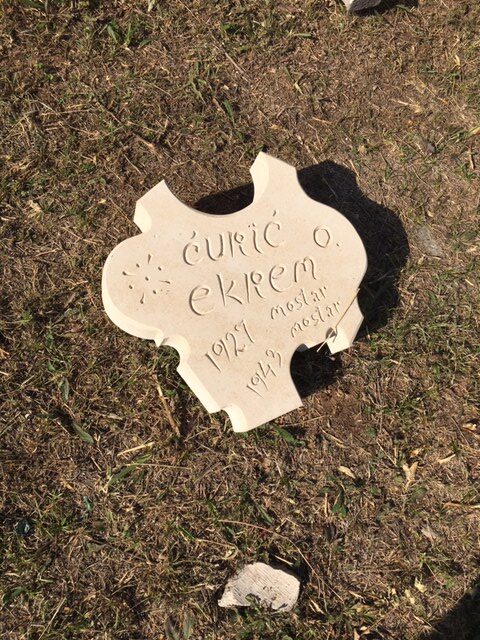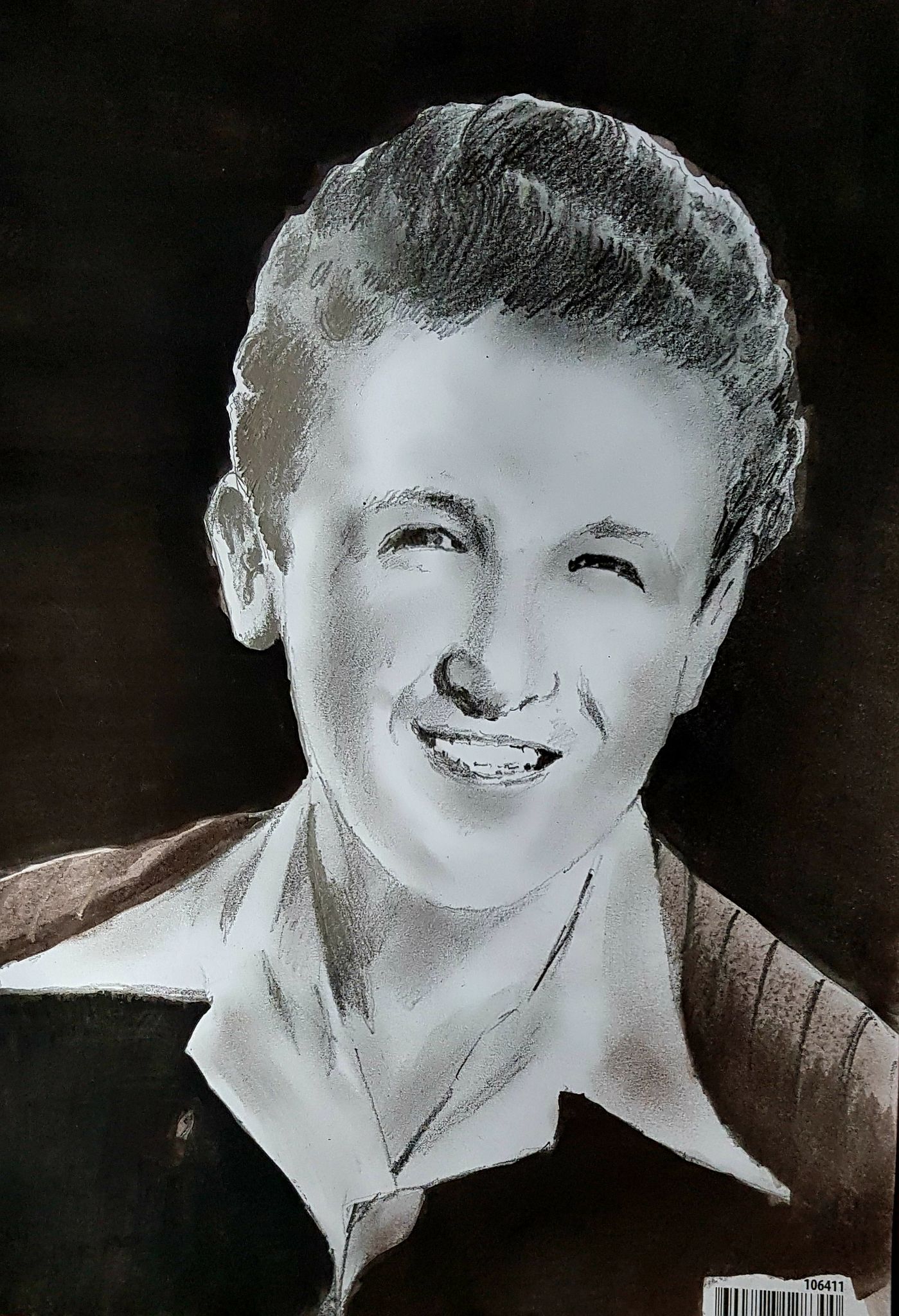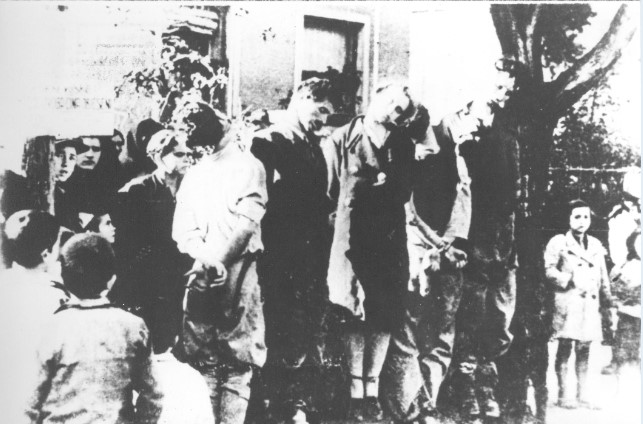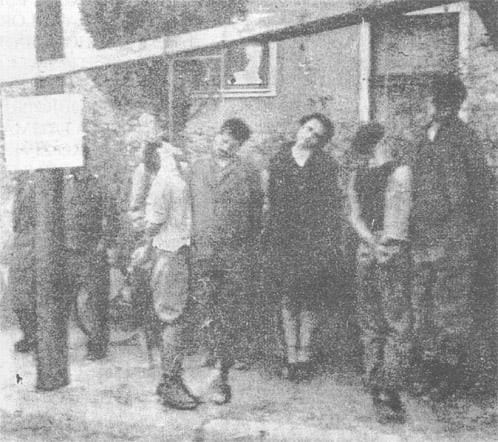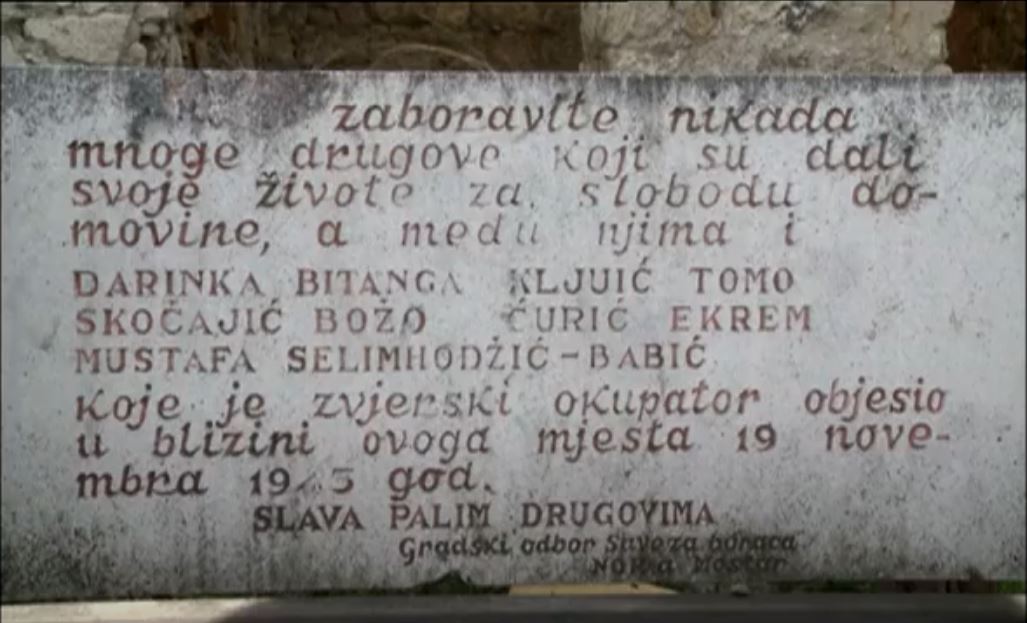
brochure "Partizanski spomenik u Mostaru" (1980)
book “Spomenica Mostara 1941-1945.”
another document or proof of the memorial stone (e.g., a photograph).
Ekrem O. ĆURIĆ
EKREM ĆURIĆ, son of OMER, born on October 4, 1927, in Prozor. From early childhood, he lived with his family in Mostar, a student at Gymnasium. Member of the League of Communist Youth (SKOJ), one of the youngest Mostar underground activists. Younger half-brother of Enver Ćemalović. Arrested three days before his departure to the Battalion and hanged in the city center on November 19, 1943, together with Muja Selimhodžić, Božo Skočajić, Darinka Bitanga, and Toma Kljujić, as retaliation for the disrupted telephone line of the German army. The Ustasha authorities arrested those they marked as communists – this was Ekrem’s seventh and final arrest. Ekrem and Enver’s mother, Hasiba, was also arrested on that occasion and spent 16 days in the same Mostar prison, “Ćelovina,” where she was continuously interrogated. She heard when her son was called and taken away to his death. Ekrem is remembered as a “brave guy and a skilled amateur craftsman, knowledgeable in many things” and that he “played the accordion excellently.”
According to the archives of Radmilo Braca Andrić, the remains of Ekrem Ćurić were transferred and buried in the Partisan Memorial Cemetery in Mostar.
As a permanent memory of the fallen, a monument was erected near the Health Center, as well as a memorial plaque at the site where they were hanged. Ekrem’s name was also recorded on a commemorative plaque in Mostar Gimnazija after the war. The plaque disappeared without a trace during the war events of 1992-1995.EXCERPT FROM LITERATURE: Enver Ćemalović, who had been with the Mostar Battalion since the beginning of the war, recalled how he learned about his brother’s death:
“At the beginning of November, a group of 6 fighters led by Vasilije Maslo was sent to Mostar, who rescued 24 young men and women. When the group arrived in the village of Blace in front of the Battalion Headquarters, we were dancing in a circle and singing. Husa Orman, who was in the group, shouted to me, ‘Ekrem has been hanged.’ I stopped singing but continued dancing in the circle. When the dance ended, I sat down with Husa and Vasilije, who told me that on November 19, Gestapo hanged them in Mostar (referring to the names mentioned above, note)… When I went to get the group, I asked Vasa to make sure to bring my half-brother Ekrem, who had been compromised due to his work at the mill and his involvement in the SKOJ organization. (…) Vasa informed him about joining the Battalion, but three days before the group’s departure, he was arrested and hanged with his comrades.”
Ćemalović, Enver (1986): Mostarski bataljon, Mostar; Konjhodžić, Mahmud (1981): “Mostarke”: fragmenti o revolucionarnoj djelatnosti i patriotskoj opredjeljenosti žena Mostara, o njihovoj borbi za slobodu i socijalizam, Opštinski odbor SUBNOR-a Mostar; https://poskok.info/mostarke-u-doba-okupacije-sloboda-nije-stigla-iz-bajke/ ; https://www.haber.ba/vijesti/bih/828920-obiljezena-77-godisnjica-ubistava-mostarskih-antifasista; Seferović, Mensur (1958): “Bataljon u okupiranom gradu”, Sarajevo; grupa autora: Spomenica Mostara 1941-1945.
Photo of memorial plaque: S. Demirović; https://www.facebook.com/photo/?fbid=2849660011986226; https://znaci.org/fotografija.php?br=15211 ; http://www.most.ba/091/015.aspx; https://www.youtube.com/watch?v=zl3W0gy7x5I&ab_channel=KnjOrg
Photo of fighter: Archives of K.D. Miletić
Do you have more information about this fighter? Share your stories and photographs. Let's keep the memory alive!
